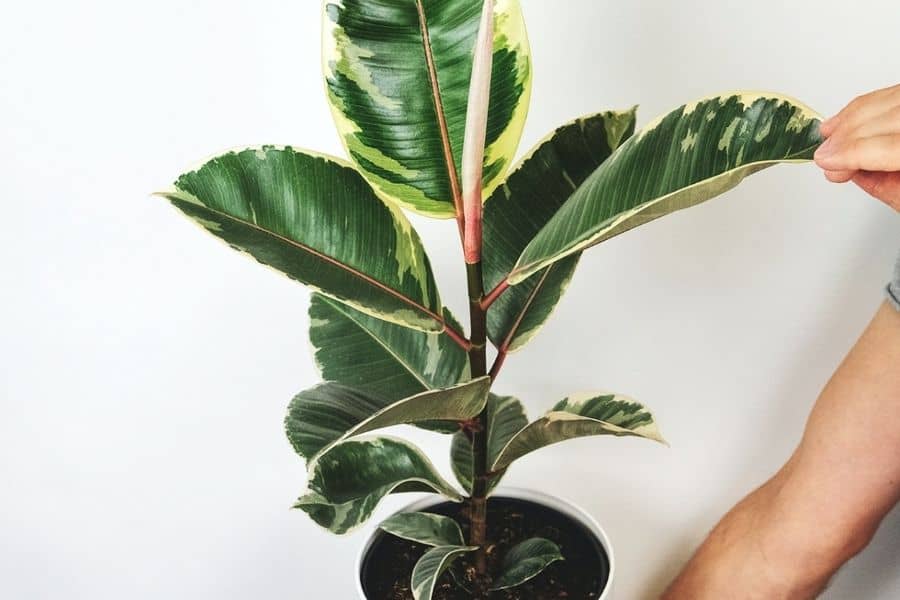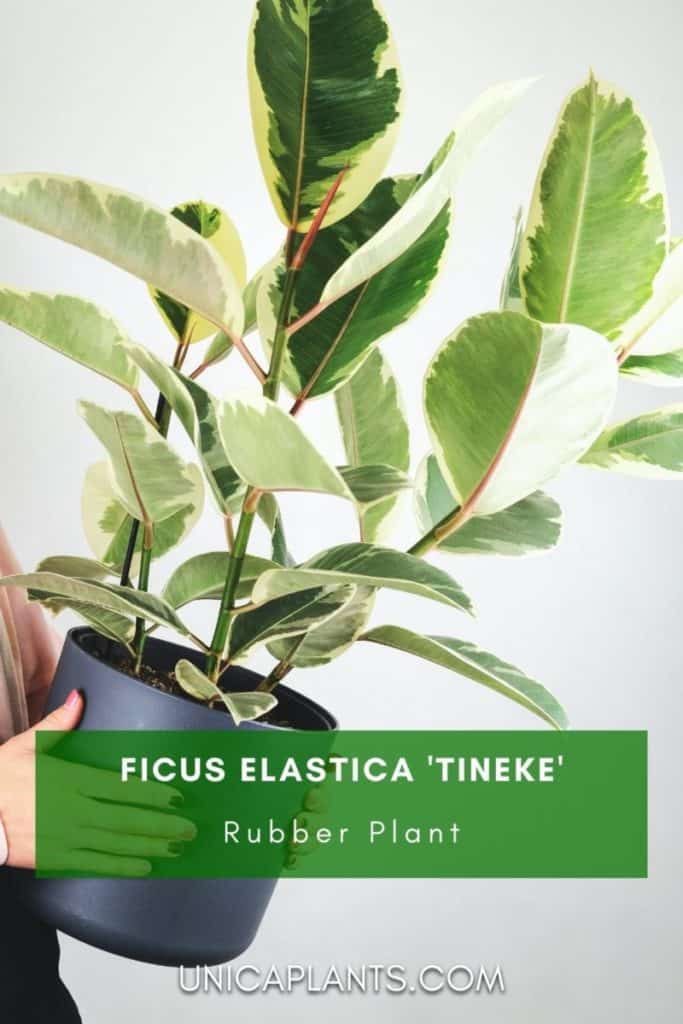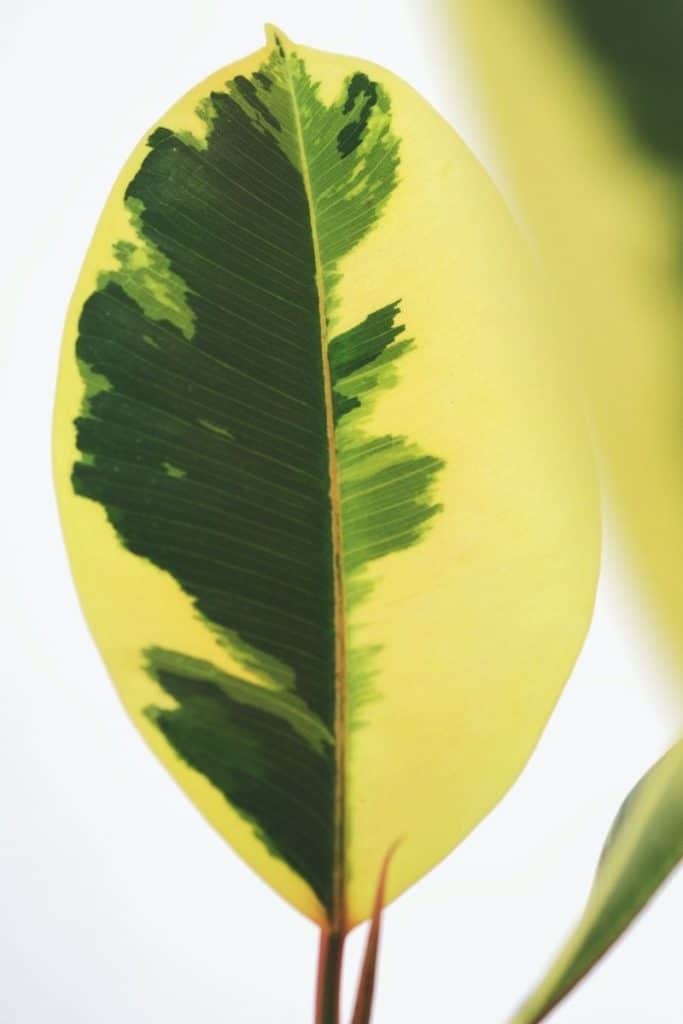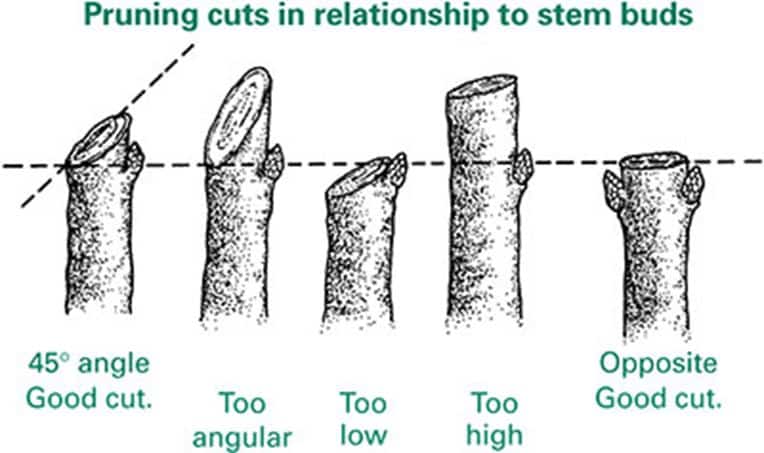
A tree-like houseplant noted for its beautiful green to white-colored leaves, the Ficus elastica 'Tineke' is an easy-to-care-for house plant that will make a fantastic addition to your indoor garden collection. This is the white-colored variety of the Ficus elastica, which is also called "rubber plant" and has earned its name thanks to the juice of the plant, which was often used in the past to make rubber. Here's a full Ficus elastica Tineke care guide, including how often to water the plant, which soil to use, where to plant it, and how to propagate it.

Summary:
- Light: Bright light, without direct sunlight
- Water: Only water when soil is dry
- Soil: Compost potting soil
- Size: The plant grows up to 8' (2.4 m) tall
- Size: The plant grows up to 10" (0.3 m) wide
- Zone: 10b (minimum 35°F | 1.7°C)
- Cold hardy: Not cold hardy
- Propagation: by stem cutting and in water
- Toxicity: Toxic to humans and pets
Contents
General Care for Ficus elastica 'Tineke' (Rubber Plant)
Although the Ficus elastica 'Tineke' naturally grows in tropical to Mediterranean regions, it is a great houseplant that is easy to take care of.
Watering
The Ficus elastica 'Tineke' tends to need a bit less water than other tropical plants. It's not a problem if you forget to water this plant once. It's best to only water when the soil is dry. To make sure the soil is dry, put your finger 1 inch deep in the soil and if the soil still feels dry, you can water the plant.
Where to Plant
The Ficus elastica 'Tineke' is not cold hardy, so if you live in a zone that gets colder than 35°F (1.7°C), it's best to plant this plant in a container that can be brought indoors. It does well in bright light.
Plant in an area that gets a lot of bright light, but avoid direct sunlight.

How to Propagate Ficus elastica 'Tineke' (Rubber Plant)
While it can be quite challenging to propagate Ficus elastica 'Tineke', it can be done in two different ways: it can be done by stem cutting or by propagation in water.
Stem cutting
If the Rubber Plant is big enough, you can use stem cutting to propagate it. First, you want to pick a healthy stem and cut it 6 inches (15cm) from the top, while making sure you have at least 2 sets of leaves on the cut.
Then trim the piece of stem you just cut off, remove all the unhealthy or dead leaves. Next, dip the stem in rooting hormone if you want and put the stem with the cut pointing downwards in a pot with moist potting soil.
Lastly, you want to put a zip bag over the pot with the cutted stem to provide a moist environment for the stem to grow in (mini greenhouse). place the pot with the bag over it in a place where it receives bright sunlight.
After a month you can remove the zip bag.
Propagate in water
This is the more challenging way to propagate the Ficus elastica 'Tineke', but it's possible! First, you want to pick a healthy stem again and cut it 6 inches (15cm) from the top, while making sure you have at least 2 sets of leaves on the cut.
Then place the stem in a jar filled with water. Place the jar with the cutted stem in a sunny/warm place and wait till roots come shoot out of the stem.
It can take a long time for the stem to produce roots, especially when the environment is not optimal. But when the stem has produced roots that are about 2 inches (5cm) you can plant the stem in potting soil.



Leave a Reply